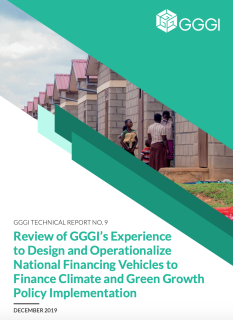
While the volume of committed climate finance is growing rapidly, it is far less than what is needed to achieve the Paris Agreement targets. National financing vehicles (NFVs), such as national climate and green funds, may be a solution to some of these challenges. In the 1990s, many national environment funds were established to accelerate the flow of financial resources to environmental policy priorities. The experience with such funds is mixed; many did not manage to recapitalise and become sustainable after their initial establishment. The current generation of national climate funds and related financial vehicles should learn from this experience.
GGGI has identified NFVs as a potential solution to overcome some of the known disadvantages of international climate finance. In particular, NFVs have the effect of creating (1) stronger alignment with national priorities, (2) reduced barriers to access for smaller organisations and even individuals or households that do not have the capacity to access international climate finance directly, (3) the rapid deployment of climate funds into projects in sectors of strategic national importance, and (4) an expanded capital base for scale-up following the initial phase of NFV.
In nine countries—Colombia, Costa Rica, Ethiopia, India, Jordan, Mongolia, Rwanda, Senegal, and Vanuatu—GGGI has worked on the design, or redesign, and operationalisation of new or existing NFVs. This paper reviews GGGI’s experience, considers lessons learned for future NFV projects that GGGI expects to undertake, and shares the organisation’s experience with others active in the climate finance space.
